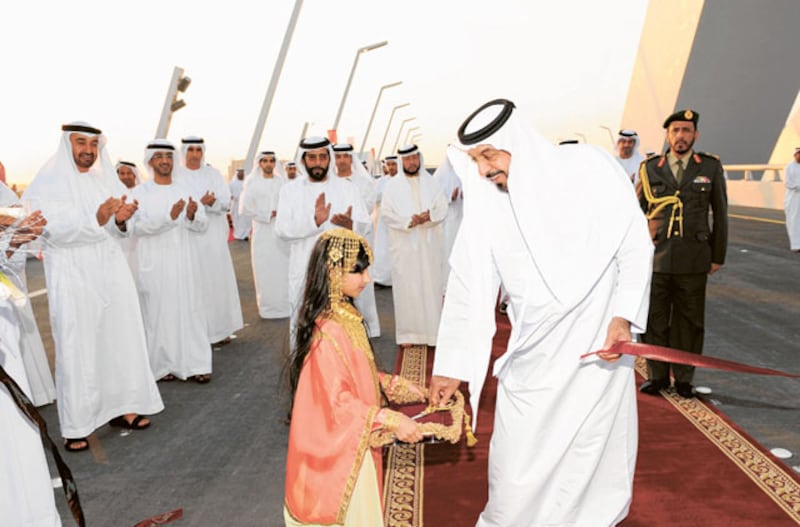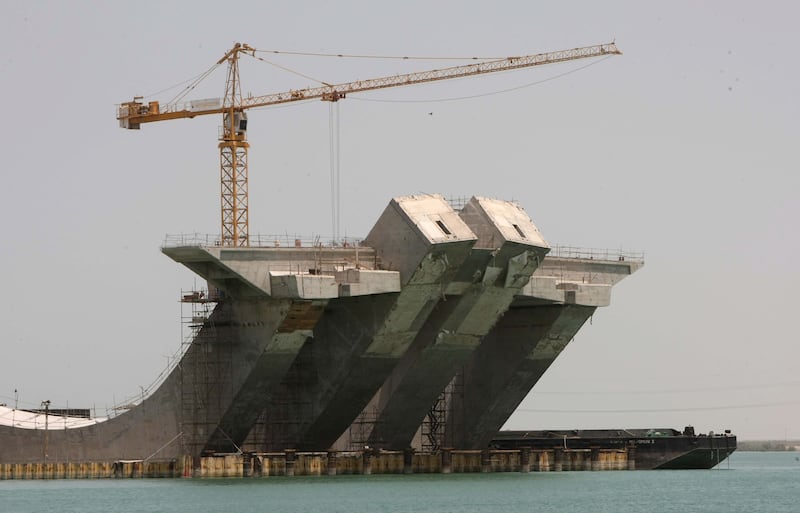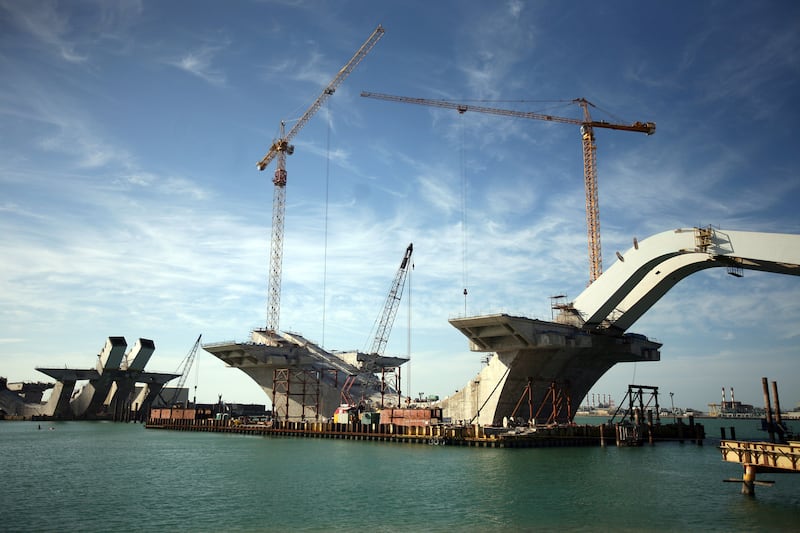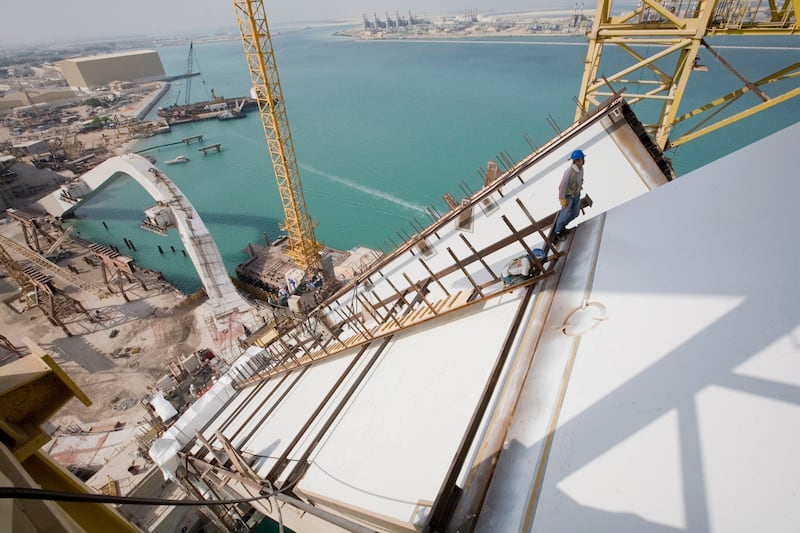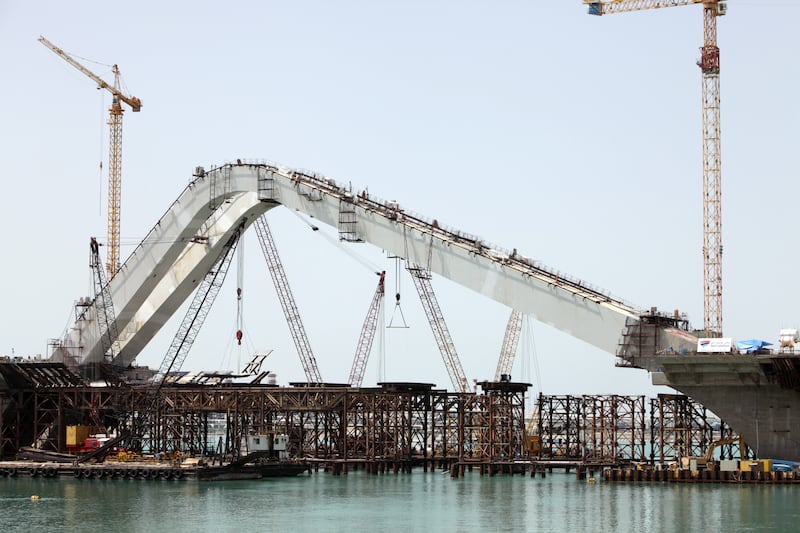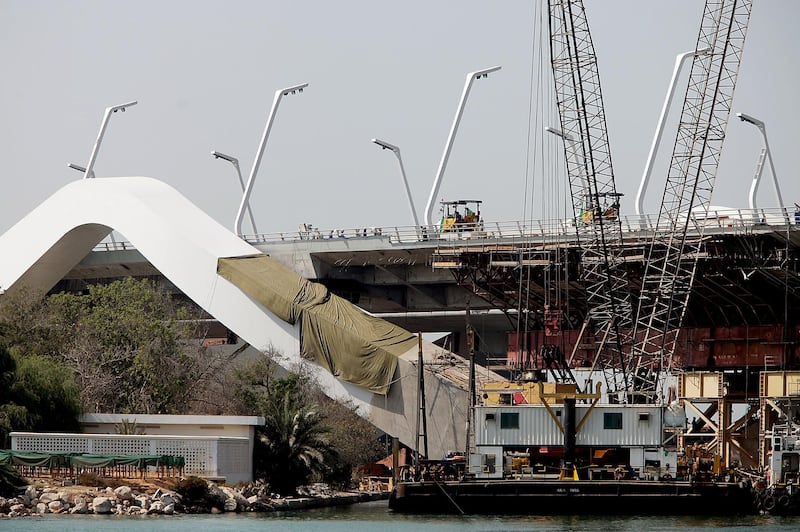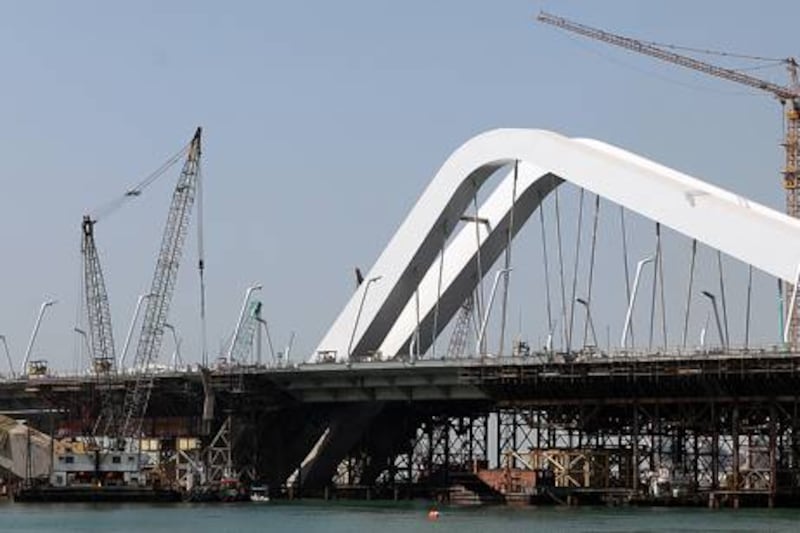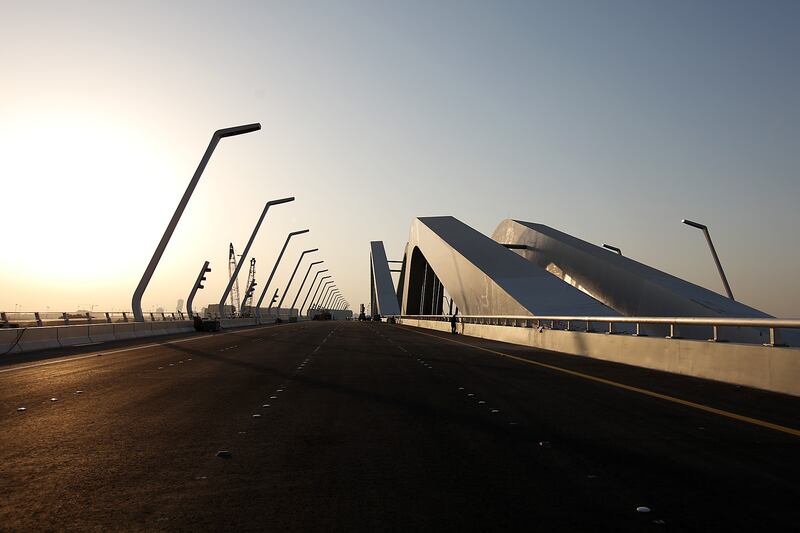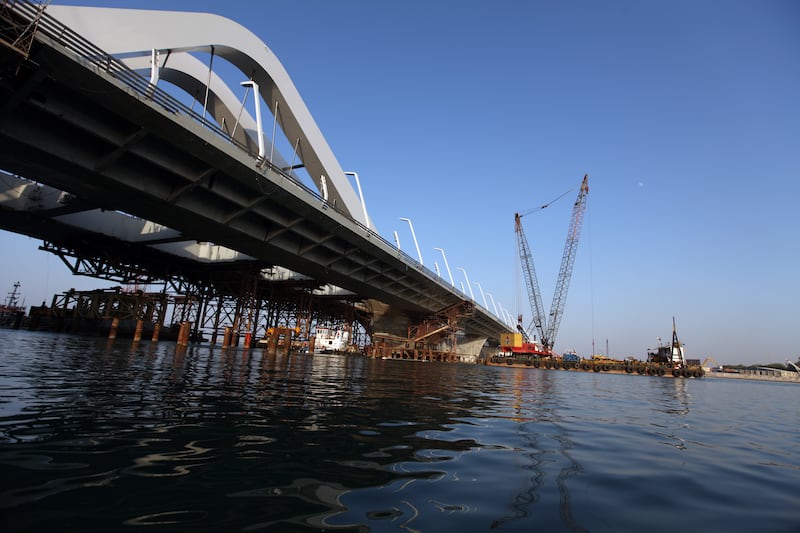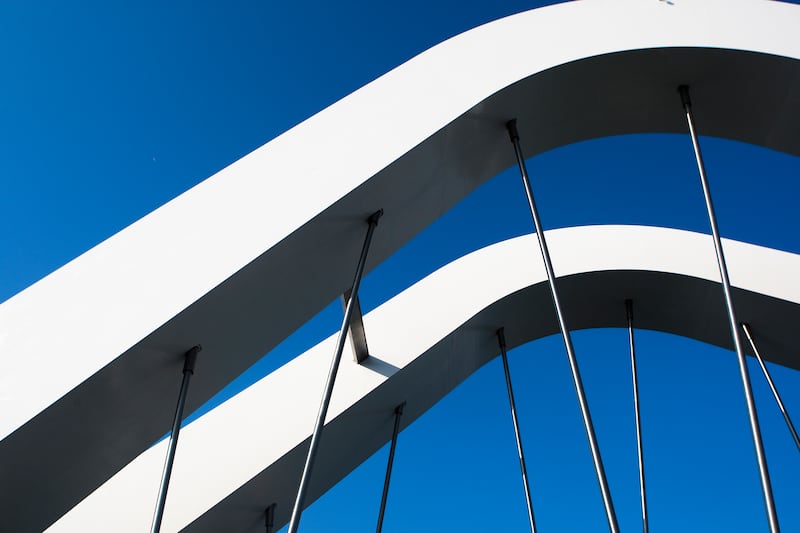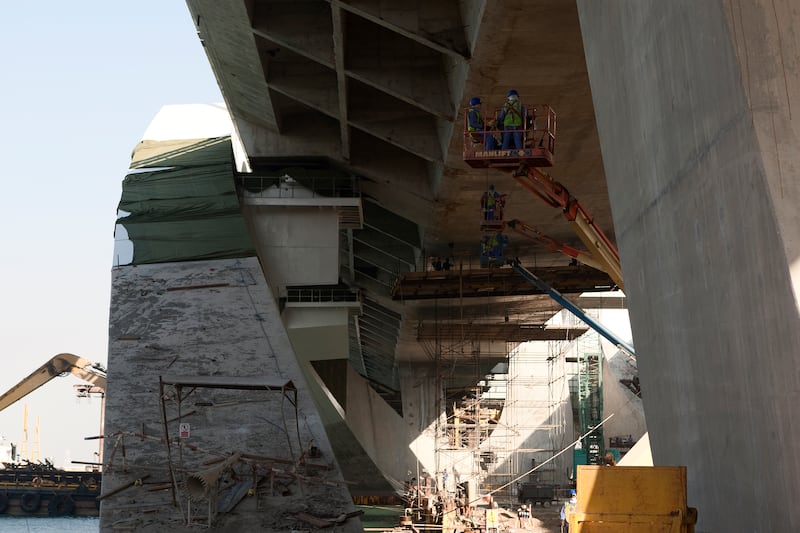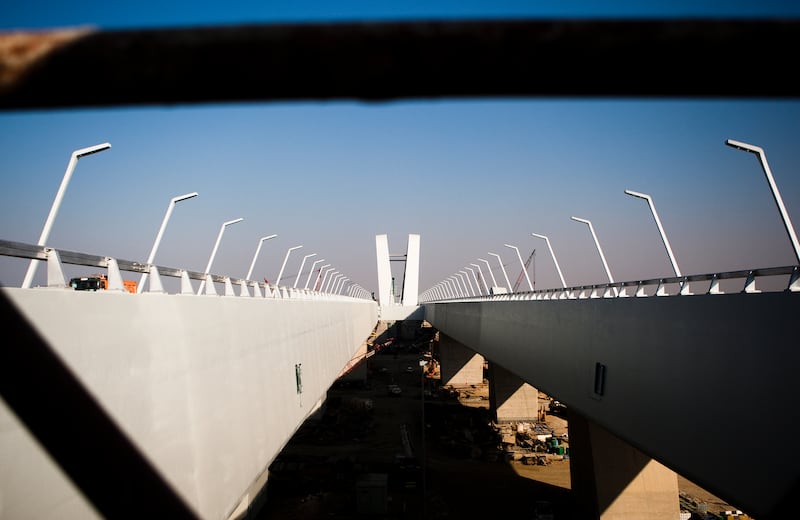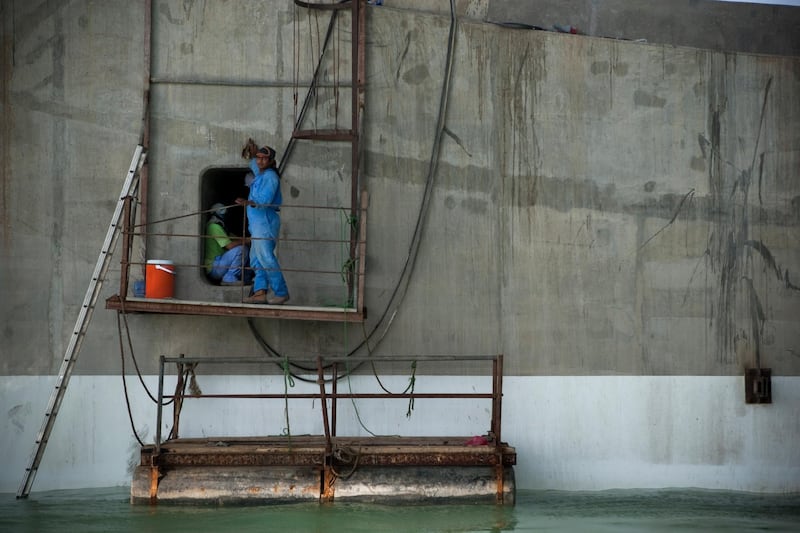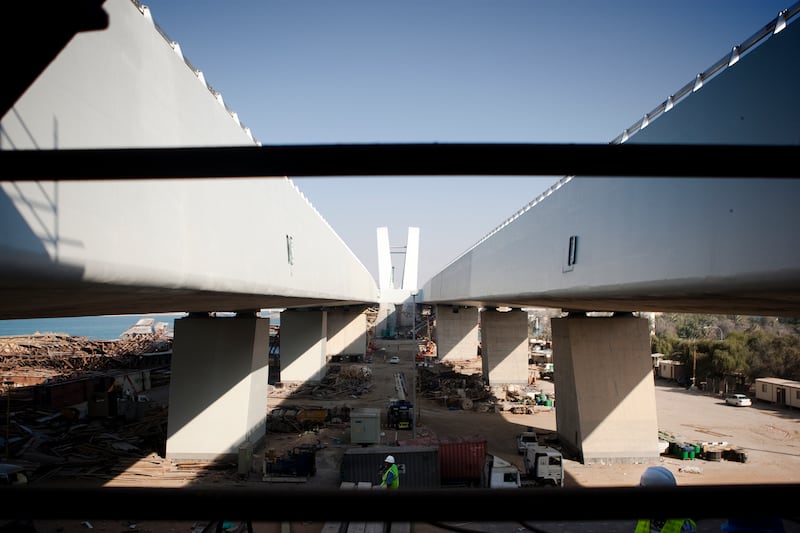They are some of the buildings that define the UAE. But what is the story behind them? In the second part of our summer series celebrating the country’s architecture, we look into how the landmark Sheikh Zayed Bridge, designed by Iraqi architect Zaha Hadid, was built.
Seventy years ago this year, workers finished pouring hundreds of tonnes of rocks and concrete into the waters of the Maqta narrows. Finally it was possible to cross from the island of Abu Dhabi to the mainland without getting your feet wet.
The Maqta Causeway might have seemed crude and visually unappealing, but for the next decade and a half it remained the only way to reach the interior of the UAE that was not subjected to the tides.
As Abu Dhabi grew from little more than a fishing village to a burgeoning city, the causeway was replaced in 1968 with the steel span and tarmac of the Maqta Bridge.
Even this would eventually prove inadequate. The Musaffah Bridge was built in 1977, and in 2000, a second span was added to the Maqta Bridge, effectively doubling its capacity.
And still the city grew. In 1997, looking to the future, the city commissioned a third bridge that would meet the demands of traffic until well into the 21st century. It would take another 13 years to complete.
To be called the Sheikh Zayed Bridge, it would cross the Maqta at the eastern entrance to the Arabian Gulf in a single span, connecting to the six-lane motorway to Dubai. The Eastern Corniche — now known as Al Gurm Corniche — would be expanded and widened, and a new stretch of motorway completed from Shahama.
The architect chosen was the brilliant if unconventional Zaha Hadid, born in Baghdad and then a British citizen. As Artichoke magazine noted a year after its opening in 2010: “The bridge bears all the usual hallmarks of Hadid’s work: structural challenges, phenomenal delays and an iconic final result.”
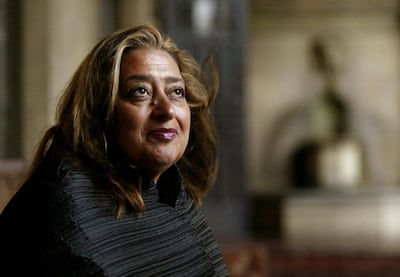
Hadid, who died of a heart attack aged 56 in 2016, had her own vision of the project. It began, she explained, with a study of the landscape and environment of the site.
“We draw certain lines of connections with the local environment and use these to inform our design. This ‘embeds’ the design into its surroundings so that each project has the strongest possible relationship with its unique context.
“We are not thinking so much of metaphor, but more in terms of analogy — the landscape analogy — where features of a natural landscape are expressed within the architectural design.”
There were influences, also, of her childhood in Baghdad. “When I was a child, we used to take along picnics for trips to the ruins of Samarra where the Tigris and Euphrates meet in southern Iraq.
“You stand there, and there is timelessness. You see the rivers and trees and you know that 10,000 years ago it was like that. There was this amazing flow between the land and the water that extended to incorporate the buildings and the people.
“I think that perhaps what I am trying to do is capture that kind of seamlessness and flow in an urban architectural context.”
The result was effectively an arch bridge, with a suspended deck supported by a series of dramatic sweeping curves that echoed desert sand dunes above and the waves of the Gulf below. It was visually stunning — but only on paper at that point.
Construction began in 2003. The bridge would be 852 metres long, nearly twice that of the Sydney Harbour Bridge, rising to a height of 64m. Those dramatic steel arches required 12,000 tonnes of steel and 250,000 cubic metres of concrete to be poured above and below ground.
The work was carried out mainly by Archirodon Construction, although late in the project Six Construction took over. For the first three years, workers toiled to drive piles and lay the foundations. It was, some claimed, the most complicated bridge ever built.
The first sections of arch rose in 2006, but work stalled during the financial crisis of 2008, leaving them hanging over empty space.
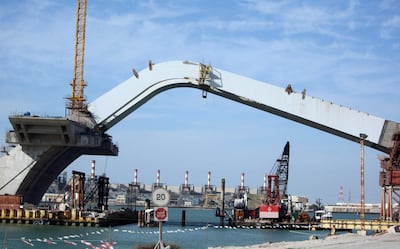
Roy Lengweiler, a Swiss-born project manager for Archiroden, saw first-hand the extraordinary physical labour required to realise Hadid’s vision.
“I would like everyone to appreciate the hard work of these people and to give them the credit they deserve,” he told The National in 2010. “Once the bridge is finished or, indeed, if you look at it now, it is difficult to comprehend the scale of what has been constructed.”
A decade later, he reflected the bridge was “unparalleled in complexity”.
The architecture, though, is only part of the bridge’s “wow” factor. As far back at 1998, it was decided that lighting would play a major part of its appearance after dark.
Roger van der Heide, a Dutch lighting designer, was brought in to work with Hadid, although it would be 13 years before his vision became reality.
The result, though, was spectacular. Six hundred automatic lights bathe the bridge in an ever-changing palate of colour described as a “language of light” that represents the people and culture of the UAE. At every new moon, it is coloured deep blue, like the Sheikh Zayed Grand Mosque.
The bridge was officially opened on November 25, 2010, by the late president Sheikh Khalifa, and attended by the UK's Queen Elizabeth II, who was on her second state visit to the UAE. Traffic flowed for the first time three days later.
Eight decades after the first humble crossing of the Maqta channel, it will be a tough act to follow.
A version of this article was first published on July 24, 2022
